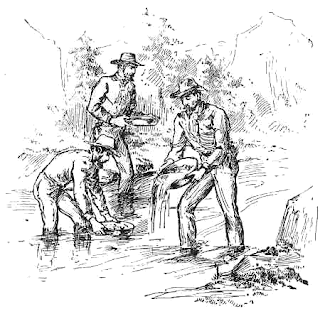Fort Ross is located north of the San Francisco Bay area on the Pacific Coast Highway on the Sonoma coast. It is approximately 94 miles north of San Francisco and about 12 miles north of the coastal town of Jenner.
Fort Ross was built by the Russians and represents their southernmost expansion on the North American continent. An interesting side note is that when you consider the European countries that explored North America, The French, English and Spaniards traveled west over the Atlantic whereas the Russians went east. All of the world's powers seemed to meet on the North American continent.
Historic Fort Ross
The explorations by the Russians were essentially for trading purposes rather than to colonize. They established the Russian American Company, somewhat on the same lines as the Hudson Bay Company. The main interest was the fur trade such as beaver and otter. Fort Ross itself was established primarily as an agricultural settlement to supply provisions to the surrounding traders. At the time of settlement the Spanish influence in California extended north to San Francisco. The Mexicans went a bit further north up to and around the town of Sonoma. All of this came to an end in the mid 1840's when the United States expanded into California as a result of the Mexican American War.
 |
| Fort Ross, circa 1828 |
The Russians and the Spaniards in California
The Russians seemed to have forged a good working relationship with the local Indians and trading between the two took place regularly. This of course was much different than the Spaniards to the south who set up a mission system primarily to convert the Indians to Christianity.
The reason for these differences were because, as mentioned above, the Russians never had any serious intentions of trying to colonize the northwest. The Spaniards of course did want to colonize and the Americans who came into Alta California after the Spaniards and Mexicans did as well. The Russian outposts along the northern coast of California extended as far south as today's Bodega Bay and they were there for fur trading purposes.
Regardless of the fact that the Russians never tried to colonize, both the Spaniards and Mexicans after them were concerned about the Russian presence to the north. Most historians seem to believe that this was the reason that the Sonoma Mission and barracks were erected by the Mexicans after Spanish rule ended. The Sonoma Mission was the last mission built and the furthest north.
Visit Historic and Scenic Fort Ross
There are several reasons why Fort Ross CA makes an excellent side trip. The fort has been designated a state park and there is much to explore. Lots of history is explained when you enter the fort compound. It's also very convenient in as much as it's proximity to the Sonoma County wine country and the drive there is spectacular along the Pacific Coast Highway going north from the town of Jenner. It's one of those drives where you'll take many pictures. Fort Ross CA is situated right on the coast with magnificent ocean views.
See our Western Trips articles n the links below...
Russian River Kayaking
Coastal Hiking at Bodega Bay
These websites will give you a lot of additional information on the area:
www.militarymuseum.org/FtRoss.html
www.googlemaps.com
Here are also some very good restaurants in the towns of Guerneville, Occidental and Bodega Bay south of Fort Ross:
Lucas Wharf- Bodega Bay
The Tides- Bodega Bay
Union Hotel- Occidental
Applewood Inn & Restaurant- Guerneville

























